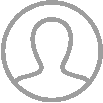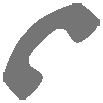
CPAP therapy is usually the go-to solution for sleep apnea. However, there are several other ways to manage sleep apnea without respiratory support. A few of these solutions can even be done at home before (and after) you even step foot in your doctor’s office. One example is Exercise Therapy. But don’t worry, that doesn’t necessarily mean going to the gym!
In fact, many of the best exercises for sleep apnea won’t even make you break a sweat. While full-body workouts like cardio and yoga can reduce your risk for sleep apnea, many sleep apnea exercises solely focus on strengthening the muscles in your mouth, throat, and respiratory system.
Today we’ll be talking about many of these exercises, ranging from simple activities that take less than a minute to a ten-minute breathing routine that you can do before bed. We’ll explain why these exercises are helpful and provide step-by-step instructions for how to do them. Plus, we’ll take a moment to discuss the impact of regular workouts and how they can reduce your risks for sleep apnea complications.
Let’s get to work!
Get Tested for Sleep Apnea, From Home! Introducing The World’s Smallest Home Sleep Test…
Looking for a hassle-free way to get your sleep apnea diagnosed? Say goodbye to sleep labs and hello to the comfort of your own bed! In just four easy steps, you’ll get your diagnosis and prescription in no time. Start your journey towards better sleep today!
Why You Should Try Sleep Apnea Exercises
Exercises are a great way to reduce the severity of your sleep-disordered breathing and improve your sleep apnea symptoms. Some have even been proven to reduce the severity of snoring and sleep apnea!
- Sleep apnea exercises reduce your risk for Obstructive Sleep Apnea.
- Breathing exercises strengthen muscles impacted by sleep apnea.
- Regular exercise reduces your risk for sleep apnea.
Tongue Exercises for Sleep Apnea
When you fall asleep, your tongue relaxes like the rest of your mouth. But this also makes it more prone to gravity, especially when lying on your back. If your tongue is weak and prone to fatigue, it is much more likely to curl backward toward your throat rather than stay at the front of your mouth. As a result, your throat and upper airway become blocked, resulting in Obstructive Sleep Apnea (OSA).
By performing tongue exercises, you encourage the muscles in your tongue and surrounding areas to become more toned and resilient. That means these structures are less likely to cause airway obstructions when you sleep. One 2015 study found that tongue training could reduce Obstructive Sleep Apnea events by 48%!
Left-Right Tongue Protrusion
This oral exercise typically involves extending your tongue as far as possible, outward and to each side. Although these tongue stretch exercises obviously target the tongue, they also engage the muscles in your jaw, throat, and neck.
- Align your head so that you are looking straight ahead.
- Stick your tongue out as far as possible.
- Move your tongue as far as you can to the left.
- Hold for 10 seconds.
- Move your tongue as far as you can to the right.
- Hold for 10 seconds.
- Relax your muscles.
- Repeat 10 times on each side.
Front-to-Back Tongue Slide
This activity involves placing your tongue at the roof of your mouth and sliding it backward and forward. You will also probably feel this movement in your neck and throat muscles.
- Hold your head in a comfortable, straightforward position.
- Place your tongue on the roof of your mouth, right behind your teeth.
- While keeping your tongue to the roof of your mouth, slowly slide it backward to the point where your soft and hard palate meets.
- If it feels too uncomfortable, move your tongue forward just slightly.
- Hold in place for 5-10 seconds.
- Push your tongue out of your mouth as far as it will go.
- Hold in place for 5-10 seconds.
- Relax your muscles.
- Repeat the front-to-back tongue slide 10 times.
Up and Down Tongue Strech
This tongue stretch is pretty easy, but you may look a little silly because you’re trying to touch your tongue to your nose and chin. This activity engages your jaw and some of those throat muscles as well.
- Start by tilting your chin just slightly upward.
- Push your tongue out of your mouth.
- Lift it upward as though you are trying to touch your nose.
- Hold in place for 5-10 seconds.
- Move your tongue downward as though you are trying to touch your chin.
- Hold in place for 5-10 seconds.
- Relax your muscles.
- Repeat this tongue stretch 10 times.
Tongue Pushups
Tongue pushups are one of the more advanced exercises on this list, but once you get used to pressing your tongue up and pushing it down, they’re actually pretty convenient. This is a multifunctional tongue workout because it also strengthens your soft palate.
- Hold your head in a comfortable position, preferably facing forward.
- Place your entire tongue gently against the roof of your mouth.
- Push upward with your tongue as hard as possible without it becoming uncomfortable.
- Hold for 5-10 seconds.
- Relax your muscles for a moment if needed.
- Move the tip of your tongue to the back of your bottom teeth.
- Push your entire tongue downward as far as you can.
- Hold for 5-10 seconds.
- Relax your muscles.
- Repeat these tongue pushups 5-10 times.
Push the Spoon
Our last tongue exercise requires the help of a spoon or other hard accessory. This one is pretty easy! You simply push the spoon out of your mouth with your tongue. You will most likely feel this movement in your tongue and facial muscles, especially your cheeks.
- Relax your tongue and mouth as much as possible.
- Stick a spoon or other hard object inside your mouth, just behind your teeth.
- Push the spoon outward, past your lips.
- Hold in place for 10 seconds.
- Relax your muscles.
- Repeat this movement 10 times.
Throat Exercises for Sleep Apnea
Your soft palate sits at the back of your mouth, right above your throat. It is made up of several different muscles, which, like your tongue, can become over-relaxed during sleep. This is more likely to happen when those muscles are weak, leaving you prone to airway obstruction.
While many of the above tongue exercises double as mouth and throat exercises, there are also other oral exercises that you can do to target your soft palate specifically. Studies show that these types of activities can significantly reduce the severity of your sleep apnea and improve your sleep quality!
Hold the Yawn
Yawning may be annoying, but it is also an automatic workout for your mouth and throat muscles. If you’re short on time and just want a quick and easy technique that you can do wherever you are, you can always practice yawning. However, we want to step things up a bit by having you hold your yawn in.
- Breathe in as though you are about to yawn.
- Do NOT breathe out yet.
- While still holding in that air, puff your cheeks out.
- You can now resume breathing slowly through your nose while continuing to puff your cheeks.
- Using your fingers, gently press inward on each cheek as though you are pushing the air out of your mouth.
- Continue to keep your lips together firmly.
- Hold the air in your cheeks for 10 seconds.
Soft Palate Pushups
Your soft palate plays a major role in producing the sounds you make when talking, which is why many sleep apnea experts suggest daily singing exercises. Some sounds make your soft palate move up, but only a few cause it to move downward. In this case, we’ll use the sounds “AH” to push our soft palate up and “NG” to move it down.
- Place your head in a comfortable, straight position.
- Start by slowly saying “father” to get a feel for how the “AH” sound feels in the back of your mouth.
- Take a breath.
- Now slowly say “sing” to get a feel for how the “NG” causes your soft palate to vibrate.
- After you have practiced those sounds, take another breath.
- Say or sing the “AH” sound and hold it for 3 seconds.
- Then say or sing the “NG” sound and hold it for 3 seconds.
- Alternate back and forth between these sounds.
- Continue for at least a couple of minutes.
Straw Transfer
There are several exercises that you can do using a straw. One of the easiest ways to work your throat muscles is to blow through a straw while covering the open end with your finger. However, we think this one is a little more fun. It involves holding the liquid in your straw while trying not to lose it before you can transfer it to another cup.
- Gather a straw, one empty cup, and another cup of water.
- Use the straw to suck up as much water as you can.
- Continue slightly sucking on the straw so the water stays in when lifted from the cup.
- Use the straw to transfer the water into the empty cup.
- Continue until you get tired or the water is gone.
Tiger Yell
Your throat muscles are a common source of problems for Obstructive Sleep apnea, so strengthening those long, thin muscles can sometimes help your signs and symptoms. Mouth and throat exercises, like the Tiger Yell, work because they stimulate areas in the back of your mouth and throat that would otherwise be difficult to exercise, including your uvula.
- Start by opening your mouth as wide as you comfortably can.
- Mimic the facial features of a tiger about to roar.
- With your mouth open as wide as possible, push your tongue out.
- Move your tongue towards your chin, as far as you can.
- Hold for 5 seconds.
- Repeat these motions 10 times.
Mouth and Facial Exercises for Sleep Apnea
Many people don’t realize how important your cheek and jaw muscles are with sleep apnea. In fact, there is a popular sleep apnea treatment called Mandibular Advancement Therapy, which works by slightly moving the jaw forward to open the airway. Studies show that face and mouth exercises may significantly improve your sleep apnea, especially for mild sleep apnea.
Fish Face
Your mouth and cheeks are full of important muscles that also affect your jaw and tongue. The fish face activity allows you to work these very same muscles by simply putting your lips together and sucking your cheeks inward.
- Move your head to a comfortable, neutral position.
- Close your lips.
- Suck in your cheeks and lips, resembling a fish face.
- Hold this position for 10 seconds.
- Relax your muscles.
- Repeat this fish face movement at least 10 times.
Jaw Tension Release
A tight jaw puts pressure on your airway and impacts the muscles that make up the other parts of your mouth and throat. Additionally, sleep apnea is linked to jaw conditions such as TMJ. If your jaw muscles feel too tight, relaxing them as much as possible before bed can be helpful. Several mouth exercises can achieve this, but this is one of the easiest!
- Put your head in a comfortable position, facing forward.
- Close your mouth and relax your tongue.
- Then open your mouth as wide as possible, stretching your jaw.
- If it becomes painful, close your mouth slightly.
- Hold this position for 10 seconds.
- Relax your muscles.
- Repeat this 10 times.
Breathing Exercises for Sleep Apnea
Underlying breathing conditions and sleep apnea have a complex relationship. Luckily, the right breathing exercises can reduce the severity of your condition and improve your sleep apnea symptoms. Some breathing exercises are designed to strengthen and stimulate your respiratory muscles, especially your diaphragm. Other activities teach your body to breathe more efficiently and effectively.
Studies suggest respiratory exercise often benefits people with Obstructive Sleep Apnea, Central Sleep Apnea, and even Complex Sleep Apnea. One 2019 study found that Threshold Inspiratory Muscle Training could significantly reduce the number of sleep apnea events per hour and improve the signs of sleep apnea, specifically sleepiness.
Alternating Nasal Breathing
Breathing through your mouth increases your risk for oral and respiratory complications. For example, having a deviated septum has been linked to sleep apnea because it causes people to breathe through their mouths. Alternating nostril breathing is helpful if you have Obstructive Sleep Apnea because it trains your body to switch from mouth to nasal breathing. The goal is to inhale through one nostril and exhale through the other.
- Close your right nostril with your finger or thumb.
- Inhale slowly through your left nostril.
- Then close the left nostril with a finger or thumb.
- Open your right nostril while leaving the left side still closed.
- Exhale slowly through your right nostril.
- Continue holding your left nostril closed.
- Now inhale through the right nostril.
- Then close your right nostril with your finger or thumb.
- Open your left nostril while leaving the right side still closed.
- Exhale slowly through your left nostril.
- Repeat this cycle 10 times.
Diaphragmatic Breathing
The diaphragm is probably the most important respiratory muscle, but if any of your respiratory muscles are too weak, it can cause your sleep apnea to worsen significantly. Diaphragmatic breathing strengthens these muscles and makes breathing easier during sleep.
- Lie on your back comfortably with your knees bent.
- Place one hand on your chest and the other on your abdomen.
- Take a slow, deep breath through your nose.
- Focus on bringing the air deep into your lungs, towards your belly.
- You should feel your abdomen rise while your chest remains still.
- Tighten your abdominal muscles.
- Purse your lips and exhale slowly.
- Focus on feeling your body relax.
- Repeat for 5-10 minutes.
Importance of Physical Exercise in Sleep Apnea
If you have ever been diagnosed with sleep apnea, your doctor has probably told you all about the importance of regular exercise. Experts agree that your overall health and wellness is closely linked to sleep-disordered breathing. Sleep apnea can also cause serious complications and increases your risk of cardiovascular conditions and even death.
According to a 2018 Brazillian study, people who participate in regular exercise have a lower chance of developing sleep apnea. And those who have been diagnosed are less likely to have severe sleep apnea.
Below are a few full-body exercises that can help reduce your risk of sleep apnea!
- Speed Walking
- Running
- Elliptical
- Biking
- Swimming
- Jumping
- Yoga
- Pilates
Frequently Asked Questions About Sleep Apnea Exercises
What Are Some Easy Exercises for Obstructive Sleep Apnea?
Some of the easiest Obstructive Sleep Apnea exercises focus on the tongue and throat muscles. Activities like practice yawning, tongue stretches, and singing can all be done in less than a minute!
How Can I Treat Sleep Apnea Without a Doctor?
If you suspect you have sleep apnea, we highly encourage you to speak with your healthcare provider about your concerns and take our free sleep apnea quiz. In the meantime, you can do a few things on your own, such as Positional Therapy and Exercise Therapy.
Do Sleep Apnea Exercises Fix Snoring?
Snoring is not always caused by sleep apnea, but both issues are often the result of airway blockages. Because of this, mouth and throat exercises can be used to reduce snoring and improve Obstructive Sleep Apnea.
Related Reading: Snoring vs Sleep Apnea: What’s the Difference?
Final Thoughts
Whether you’re hitting the weights or simply moving your tongue around for a minute, the relationship between regular exercise and sleep apnea is very important! Following an exercise regimen that focuses on building the muscles of your mouth, throat, respiratory system, or whole body can greatly reduce your risk for sleep apnea and minimize its severity. As always, talk to your doctor to determine the best sleep apnea solutions for you!





12 Responses
I didn’t know there are exercises to help against apnea. I will try them every day but they are not so easy. Could you please explan better by posting some pictures or short Movies?
Thank you so much for your help
Hi Mara, my apologies on the delayed response. I agree that pictures, or possibly a video is a great idea! I have forwarded the request to the our Marketing department.
Please reach us at: 1-800-356-5221, or you may e-mail us at: cpap@cpap.com, for further questions, or concerns.
Have a great day!
New user and wake up feeling sleepy and can last all day, with no energy……opposite of what others report. What does this mean ?
Hi Barbara, i’m sorry to hear that you are experiencing feelings of sleepiness and no energy. Please keep in mind that it does take time to become acclimated with your CPAP Therapy. Also, having a good fit with your mask is key to successful therapy. If possible, please check your therapy data, to confirm if you are experiencing any mask leaks, confirm that your mask fit is good and check for the number of AHI’s you are having.
If your data shows a high leak rate, you may need to consider a different size mask, or even a completely different mask. If you are having an average of 5, or more AHI’s, I would recommend you speaking with your doctor, as a pressure setting adjustment may be required.
Please feel free to reach us at: 1-800-356-5221 for further assistance if needed.
Have a great day!
Thank you! Best inclusive description of these exercises I’ve seen. Have advanced normal pressure glaucoma with visual field loss and my doctor wants me to try every method besides my CPAP to control the sleep apnea. There is concern of any decrease to the eyes’ blood supply at night from external pressure to the vessels. I’ve been leery stopping it however because it seems that untreated sleep apnea is increasingly associated with the worse types of normal pressure glaucoma. Can’t take the all day headaches either if sleep apnea not treated. I am a very thin person and so think it is likely that out of shape oropharyngeal muscles could be the whole problem. Using silicone bite piece at night instead of CPAP sometimes which has helped but not as comfortable as the CPAP! In any case, the motivation to do all of these exercises regularly is there.
Hey Bev! I am certain that the author of the article would say, you’re welcome! I’m happy to hear that you found the article helpful and wish you great success with your CPAP therapy.
Please feel free to reach us at: 1-800-356-5221, or e-mail us at: cpap@cpap.com, with any further questions, or concerns.
Enjoy the rest of your day!
Is it necessary to know which muscles you need to strengthen? Would it be okay if I wanted to strengthen all of them? Thank you!
Hi Barbara, it isn’t necessary to know which muscles you need to strengthen. Actually, you would most likely have more benefit if you worked to strengthen all of the muscles!
Please feel free to reach us at: 1-800-356-5221, or e-mail us at: cpap@cpap.com with further questions, or concerns.
We wish you the best!
Hi,
I am suffering with sleep apnea since so many years and it’s returned once in a month and stays for a week until I started mouth exercise so please tell me the exercise which helps me for better sleep and please provide the video for exercise.
Thanks
Achin
+91-9911744415
Hi Achin, the recommended exercises in the article are: Tiger yell, Sing Loud and Proud, Tongue Slides, Soft Palate Stretches and Jaw Tension Release.
Unfortunately, we don’t have a video available demonstrating each of the exercises, but that is a great idea, thank you for your feedback.
Please feel free to reach us at: 1-800-356-5221, with further questions, or concerns.
Have a great day!
Has anyone done research on the effects of BPAs and chemicals in the tubing of CPAP’s? This is why I have chosen not to use one. I cannot imagine that all those chemicals are good for anybody’s lungs or anywhere else in their body.
Hi Elaine,
I’m not certain what, or if any current research, has taken place, but below you will find the information we have regarding BPA.
All CPAP masks and CPAP humidifier chambers either contain BPA or their manufacturer has not released a statement calling their products BPA free. Here is a statement released by Respironics:
Government of Canada Takes Action on Another Chemical of Concern: Bisphenol A
April 25th 2008
To Whom It May Concern
This document represents Respironics’ position regarding the use of Bisphenol A in Respironics Sleep and Home Respiratory Devices. On April 18, 2008, the Government of Canada, banned the use of Bisphenol A (BPA) in polycarbonate baby bottles, claiming that the exposure to BPA on newborns and infants up to 18 months of age, could potentially present a health risk to this patient group when the polycarbonate baby bottles are exposed to high temperatures.
At this time, we are able to provide the following information to our customer: NONE of our Sleep and Home Respiratory products which are either breathable or skin contacting are intended for use with newborns or infants under 18 months of age. Therefore, Respironics is in compliance with Health Canada’s position for exposure for the identified at risk patient population.
Although Health Canada’s restriction for BPA does not include products used for ages above 18 months at this time, Respironics is evaluating its product portfolio and will take the appropriate actions to determine and mitigate any potential risk from use of its products or potential exposure to BPA. It should be noted that NOT all polycarbonate resins contain BPA. In response to the direction provided by Health Canada’s device licensing division, Respironics will be evaluating all of our Class II and III medical devices to determine if the resins used in the manufacturer of its products contain BPA.
Further, none of our products or accessories using polycarbonate are labeled for exposure.
In closing, it is Respironics position that our products do not pose any increased risk of exposure to BPA for our users and thus our products remain safe for use.
If you have any further question regarding this topic, please feel free to contact me at zita.yurko@respironics.com or at 724-387-4120.
Regards,
Zita Yurko Director, Regulatory Affairs Sleep and Home Respiratory Division Respironics, Inc.
Have a great day!